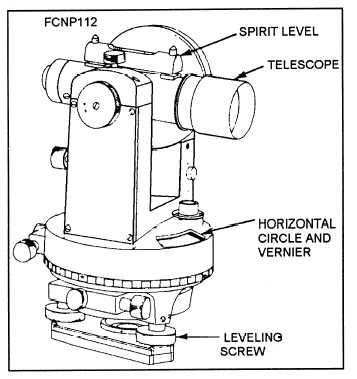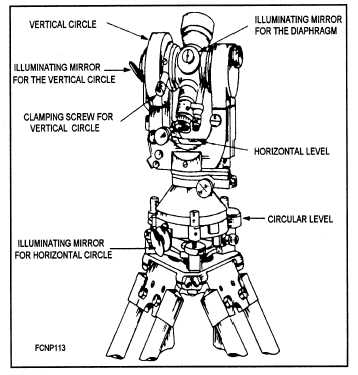elites, clinometers, levels, alignment sights, tram bars
and blocks, benchmarks, and dials.
TRANSITS
A transit is an optical-surveying instrument that is
used for measuring angles. Essentially, the transit pro-
vides an optical line of sight (LOS) that is perpen-
dicular to, and supported on, a horizontal axis. The
horizontal axis is perpendicular to a vertical axis
about which it can rotate. Spirit levels are used to
make the vertical axis coincide with the direction of
gravity. Graduated circles with verniers are used to
read the angles. A typical transit is shown in figure
3-7.
THEODOLITES
Theodolites are similar to transits, but they are
normally more-precise instruments. Theodolites use
micrometer microscopes that are especially designed
for rapid and accurate readings and are used to read
the graduated vertical (for elevation) and horizontal
(for train) circles.
Micrometer microscopes create such precision that
the accuracy of the optical reading device is governed
by the circle and not by the way the circle is read.
Different types of theodolites can be read directly to
10 inch, 1 inch, or 0.1 inch of arc. Figure 3-8 is an
example of a typical theodolite.
Figure 3-7.—Typical transit.
Figure 3-8.—Typical theodolite.
3-6



